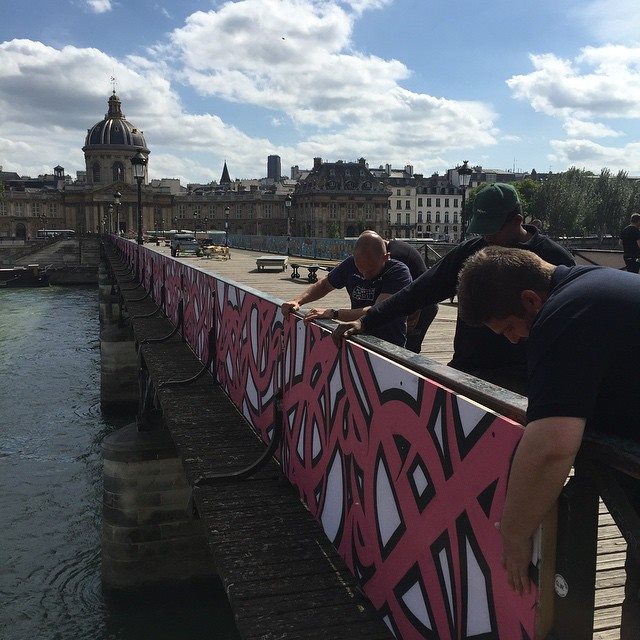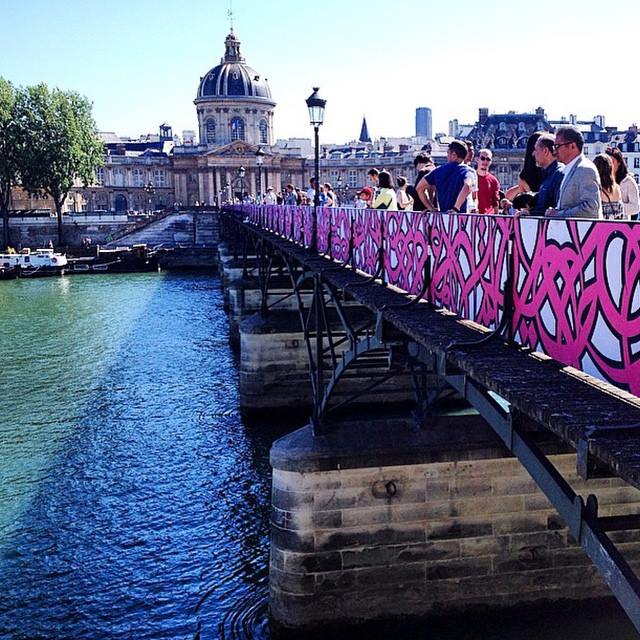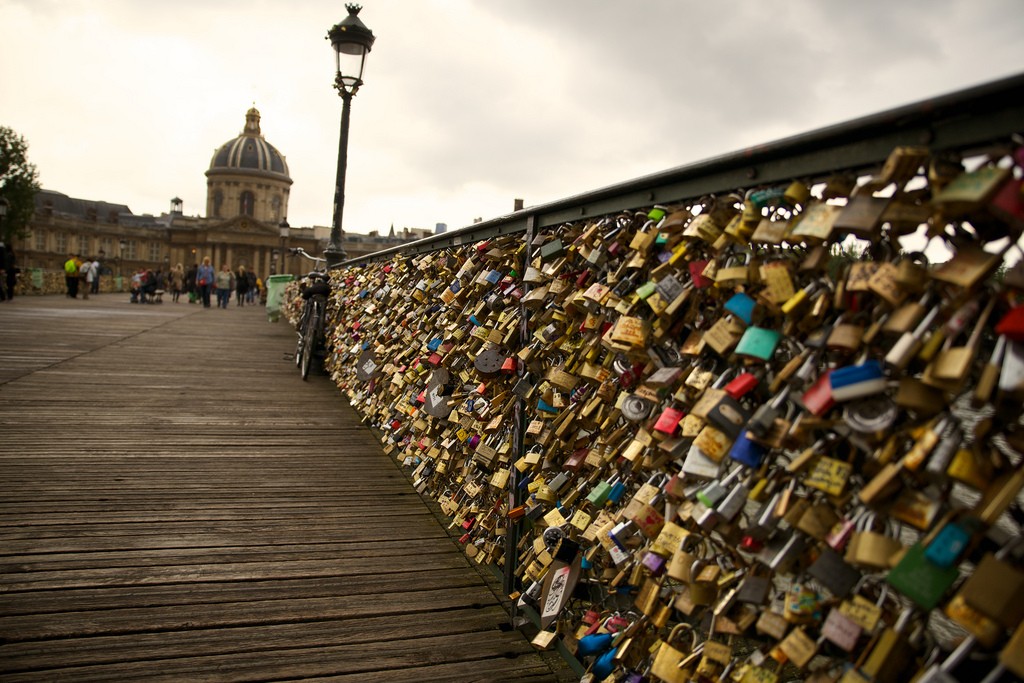
By Sana Panjwani
With the click of a lock and the toss of a key, thousands of couples swore their eternal love to each other on Paris’ Pont des Arts.
This lovelock phenomenon may be global, but no city has been associated more with the tradition than the city of love itself.
After years of endless promises, however, the weight of love is becoming unbearable.
On June 1, Paris City Hall workers began to cut off and dismantle an estimated 45 tonnes of padlocks blanketing the bridge amid concerns that the 19th century bridge could collapse under the weight of these love tokens. In fact, a section of the footbridge collapsed over the Seine in June last year.
“It’s a catastrophe for the bridge,” said City Hall spokeswoman Barbara Atlan. “We need to preserve the heritage.”
Ever since the global trend took off in 2008, the bridge has been subject to the enormous weight of locks left behind by tourists and was recently measured to be holding four times the load limit allowed.
“This phenomenon [gave] rise to two problems: a lasting degradation of the heritage of Paris and a risk to the safety of visitors: Parisians and tourists,” Paris City Hall said in a statement.
Recognizing the significance of Pont des Arts, and in an effort to stop further “lockings,” the city arranged for a temporary street art exhibition of 56 panels, open to the public from June 8, to grace the bridge gating before being preserved with plexiglass in October.
International graffiti artists including El Seed, Jace, Brusk and Pantonio were commissioned to create art, focused on love, to display in place of the lovelocks.

Arguable one of the most well-known artists among the four is French-Tunisian artist El Seed, known worldwide for his signature “calligraffiti” style – a beautiful blend of ancient Arabic calligraphy and contemporary urban graffiti. Often inspired by the poet Mahmoud Darwish, Iraqi artist Sundus Abdul-Hadi and French artist Zepha, Seed’s art has been displayed in Tunisia, Brazil, France and the United States.
“I hope to get across to people that dialogue leads to positive encounters,” said el Seed in an interview about his earlier work. “I always hope to break a few stereotypes or barriers each time I paint.”
Unlocking the viral trend
The love lock trend first arrived in Paris in 2008 where couples from around the world flocked to the city to fasten a padlock with both their names written on it to “love lock bridge” and toss the key into the Seine river. While the original love padlock phenomenon can be traced back to a Serbian World War I tale of love and loss, the viral trend as a sincere expression of romance was inspired by Rome-based Federico Moccia’s novel Ho Voglia di Te (I want You) where the teen protagonists attach a lock to the Milvio Bridge in Rome before dropping the key into the Tiber River to immortalize their love.

“From a distance, you don’t know that they are locks. Close up, they may be visually ugly, but they tell stories,” said Anthony Boccanfuso who witnessed the dismantlement of the iconic locks last week. “It’s like carving your names on a tree or putting your names in wet concrete.”
Controversy had always surrounded the locks with some dubbing it as “vandalism” and others as “romantic symbolism.”
“It doesn’t improve the bridge,” said Belgian artist Marianne Truffine. “On the other hand it is a proof of love, and all proofs of love are beautiful.”
The city is campaigning for citizens and tourists alike to leave their marks of love online instead by taking selfies and tagging #LoveWithoutLocks; they state that this is a far safer method of declaring their undying love. The tag #LoveWithoutLocks is also being used to showcase the artwork on Twitter, as well as lament the passing of the famous lovelocks.
“The city’s reputation as a capital for lovers draws on its history, its beauty and many other qualities that aren’t linked to this recent trend,” saod Damien Steffan, a spokesman for the mayor.
While the locks may be unshackled, the romantic tradition will undoubtedly continue in other parts of the world and love as always, will go on.





























Comments